I'm decorating a house in the English Cotswolds – these are my top tips for channelling English country style
Are you looking to capture the English country style? Here, I share my best tips, alongside interior designers versed in the style, for characterful rural schemes
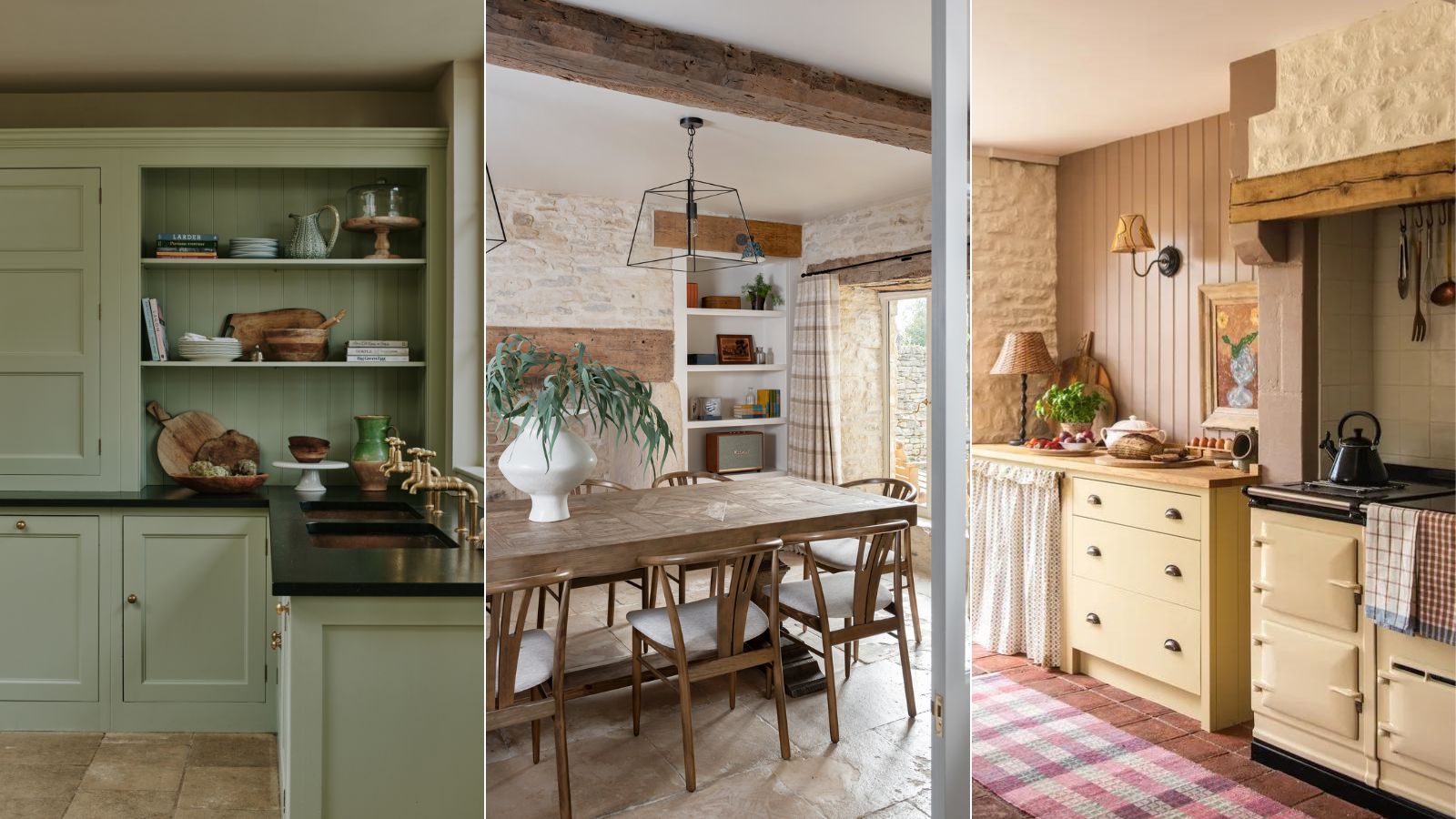
- Choose high quality furnishings in natural materials
- Take inspiration from the colors of nature
- Let characterful features take the lead
- Introduce vintage pieces
- Soften spaces with plenty of fabric
- Fill your home with pattern and personal treasures
- Embrace tongue and groove paneling
- Decorate with Arts & Crafts prints
- Decorate with nature-inspired prints

Having been born and bred in the heart of the Cotswolds, English country style is in my blood. As a child, I grew up in a chocolate box thatched cottage with a wrap-around garden that looked out onto rolling hills and fields.
As a young adult and a student of Art History, I spent my days exploring the historic homes and gardens of the Cotswolds, captivated by the beauty of the picturesque honeyed stone facades and the timeless interiors within, brimming with characterful features.
Now that I’ve managed to get onto the property ladder, I’m keen to infuse my love of country style into my small home in the Cotswolds. To help refine my country decorating ideas I reached out to my favorite British interior designers for their tips on embracing quintessential English country style and have gathered a selection of inspiring projects which will be going straight on my mood board.
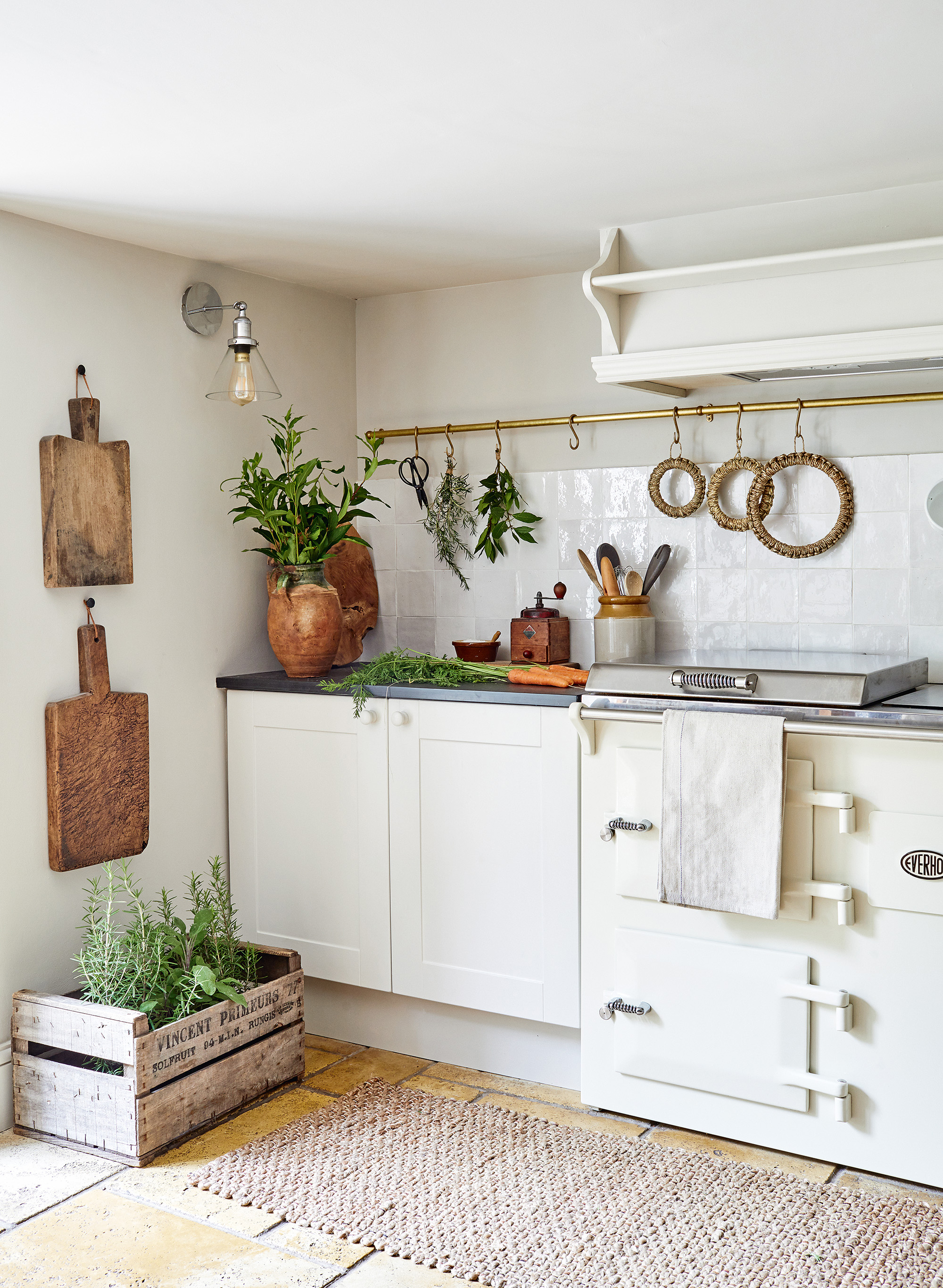
Achieving a beautiful country interior centers around a few key principles. Perhaps the most important is to draw inspiration from the rural setting and decorate with natural materials.
‘Firstly, it's crucial to decorate with natural materials; think stone, wood, and woven textures that bring the outdoors in,’ says Cotswold-based interior designer Lauren Gilberthorpe. ‘Layering warmth and texture through textiles such as wool, linen, and cotton adds depth and comfort, creating a cozy and inviting atmosphere.’
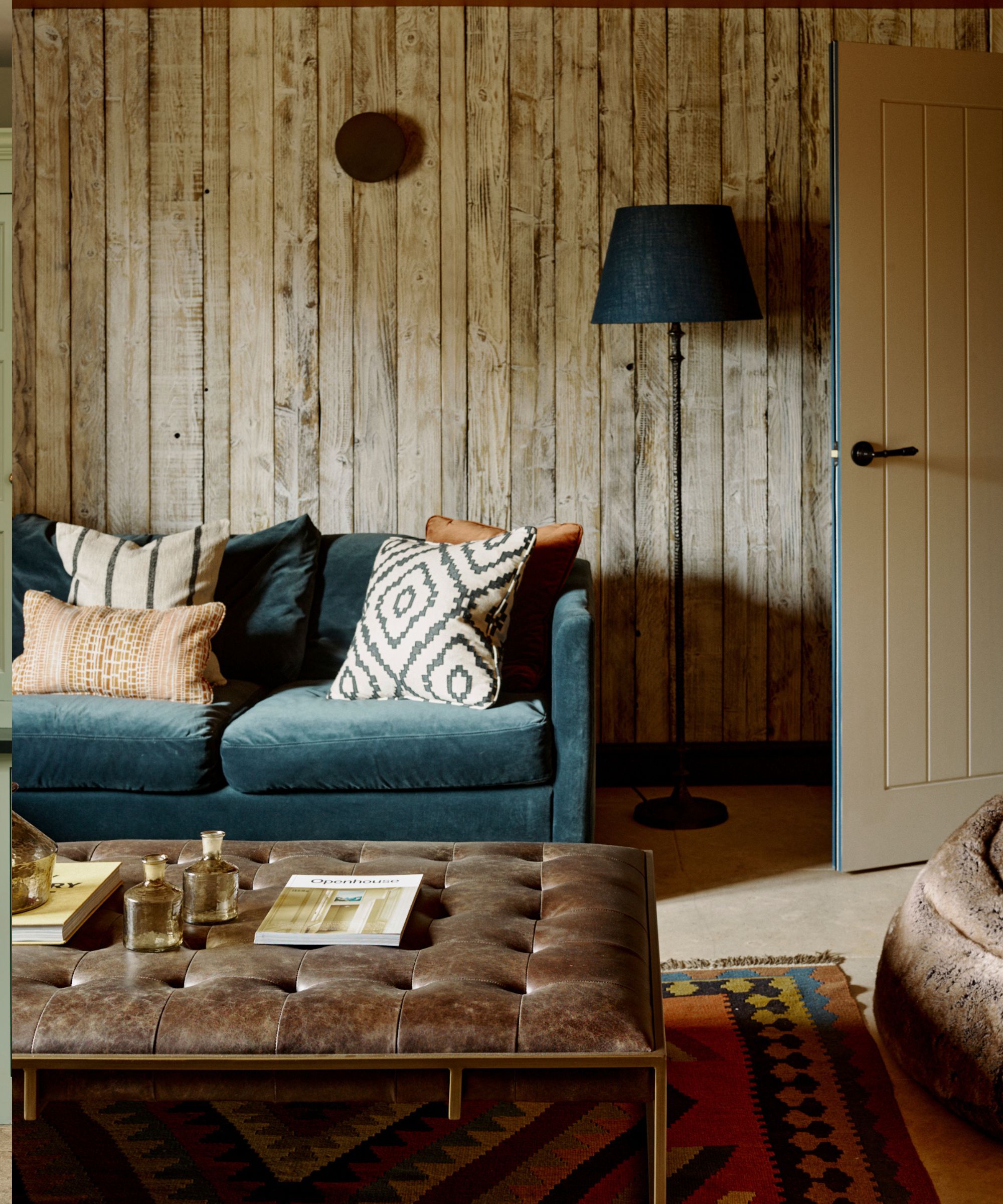
The same advice can extend to color choices, too – think about using shades that pay homage to nature’s palette, say the experts.
'Nature is always a good source of inspiration for a color palette, looking at the garden or landscape around there are so many different tones and hues of green that all work beautifully together so don't get too hung up about which greens work with others,' says Emma Sims Hilditch, a master of timeless country style and founder of Sims Hilditch.
Design expertise in your inbox – from inspiring decorating ideas and beautiful celebrity homes to practical gardening advice and shopping round-ups.
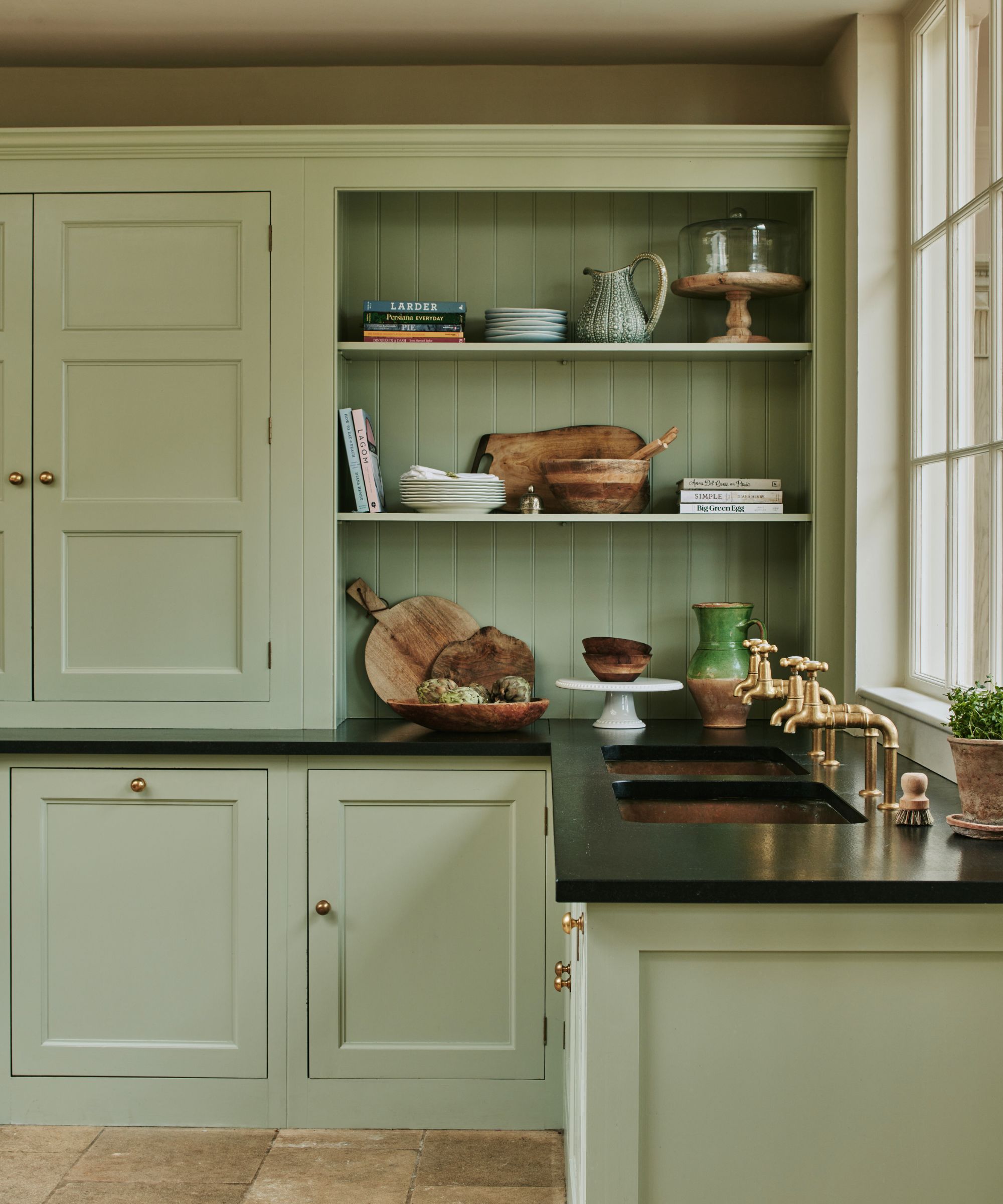
If you’re lucky enough to have a period property or one with beautiful vernacular features, then ensure these are restored and showcased as part of your design. Often these can make a great starting point.
'Respecting the architectural features of the space is another key element – embracing exposed beams, original fireplaces, and flagstone flooring helps maintain the authentic charm of the property,' explains Lauren Gilberthorpe.
In my case, I’m lucky enough to have beautiful original wooden floors, doors and fireplaces. When I started renovating I made it a priority to tackle the floor first, sanding back the boards to their natural state before applying untinted Osmo oil to highlight the raw beauty of the wood.
Below I've rounded up my top tips for capturing the English country style with some help from the experts.
Choose high quality furnishings in natural materials
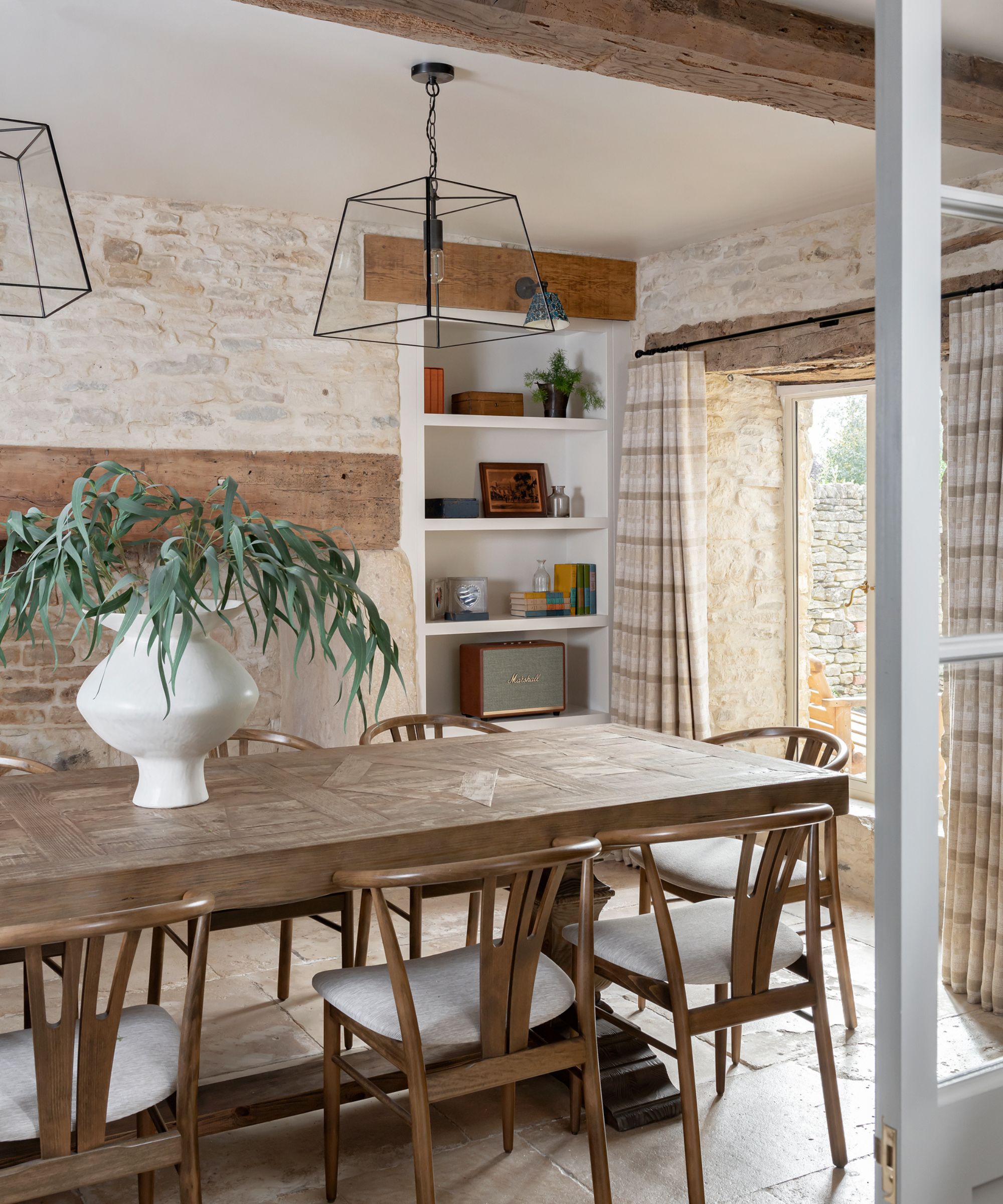
Opting for high-quality furnishings crafted from solid wood may be an investment, but they are the best way to achieve a functional and timeless space. Commissioning bespoke joinery will make the most of the awkward angles in country homes while handcrafted pieces like dining tables will make for a unique and practical focal point.
'The brief for this project centered around honoring the cottage’s rich history while infusing it with modern comforts,' says interior designer Lauren Gilberthorpe. 'The goal was to create a space that felt both timeless and current, marrying the rustic elegance of the countryside with contemporary sensibilities.'
'We selected a handcrafted oak dining table, which serves as a centerpiece, reflecting the natural materials and craftsmanship synonymous with classic country style. Surrounding it, we placed contemporary wingback armchairs with an upholstered seat cushion in a heavyweight linen fabric for additional comfort.'
'We also incorporated bespoke shelving in what would have otherwise been unused space to house decorative objects and an antique speaker to play music when hosting dinner parties. Oversized pendant lights create contrast and act as a statement piece to the room,' adds Lauren Gilberthorpe.
Take inspiration from the colors of nature
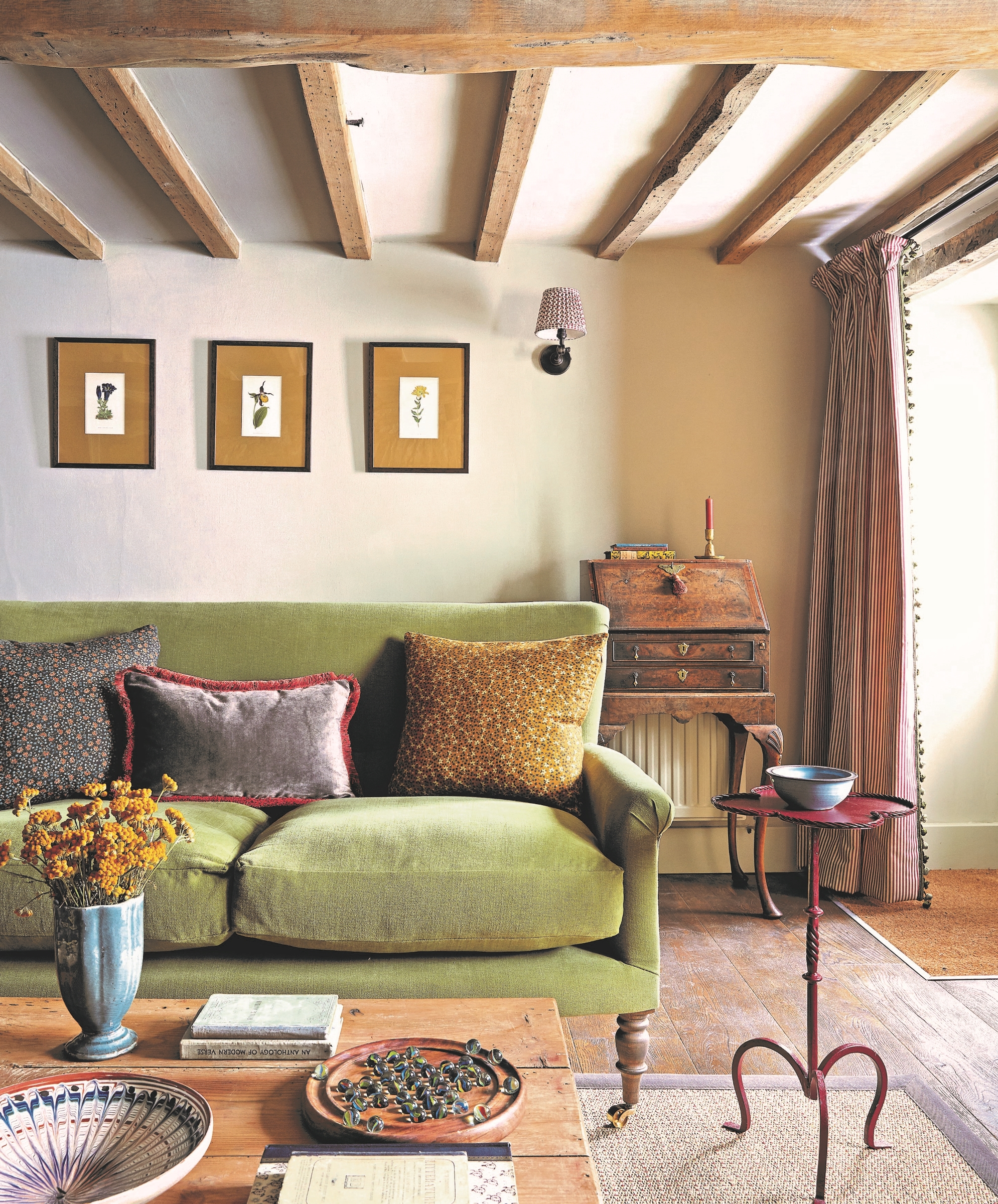
When creating a comforting, country-style interior look to nature's palette say the interior designers. This living room at Laura Stephen's beautiful Cotswold project, Well Cottage, caught my eye for its mix of green and warm neutrals which pair beautifully with the period features.
'Our brief from the client was ’to be inspired by the outside environment’ so we aimed to bring the outside colors of the surrounding countryside into the cottage schemes. Our client didn’t want a chintzy look so we focused on really bringing earthy colors and natural materials into the whole house scheme but particularly into the sitting room. To avoid the chintz we opted for tartan wool for soft furnishings and trims to add interest,' explains interior designer Laura Stephens.
Let characterful features take the lead
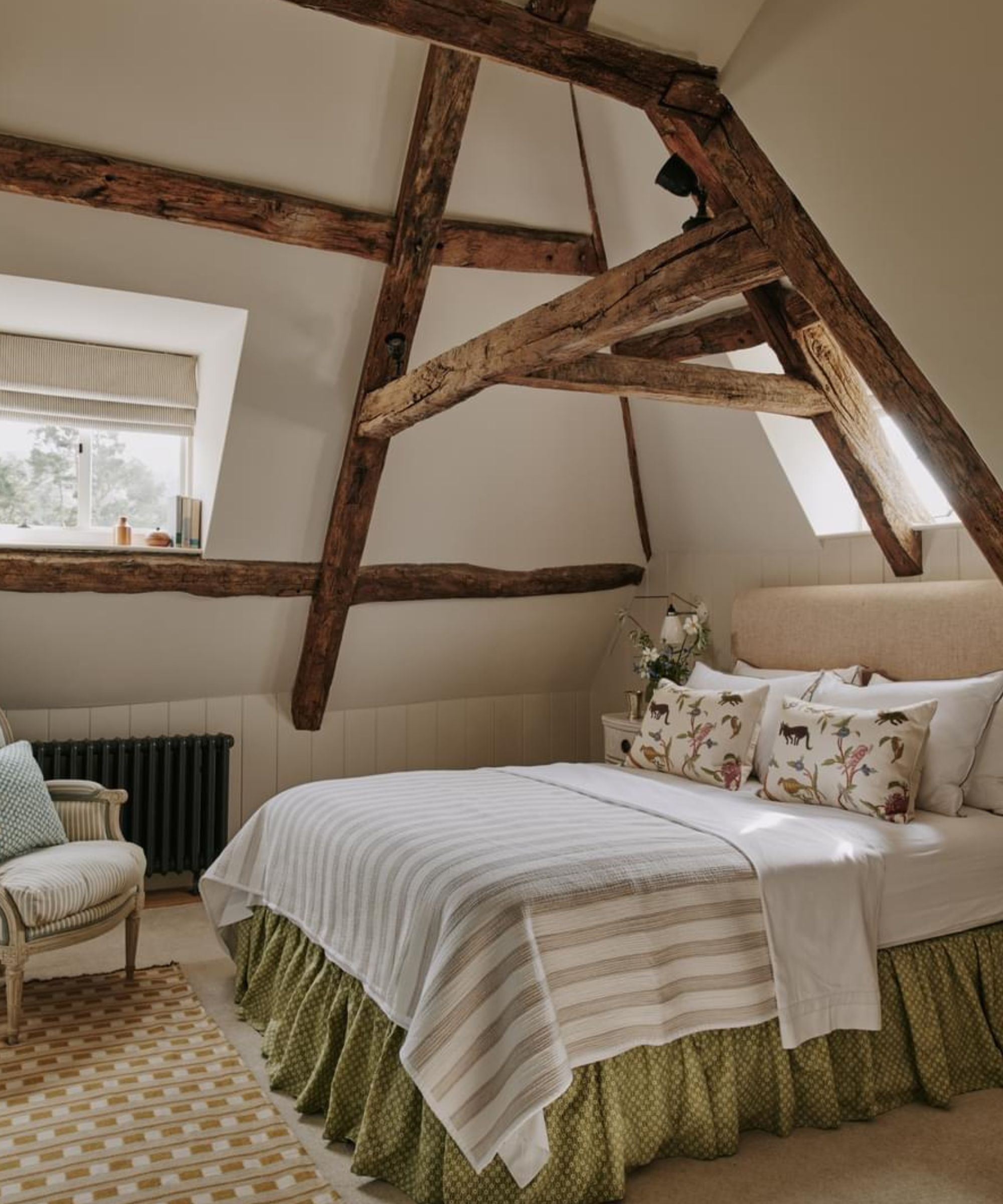
The charm of country homes often lies in their unique architectural features so it's important where possible that these are always preserved and highlighted as part of a scheme, they can also make a great starting point for a scheme. In this room by Sims Hilditch, the beautiful beams are a natural focal point so a neutral palette and subtle prints have been chosen to allow them to sing.
'When designing a country home, we will always look to begin our designs with a focal point, such as a piece of art, a beautiful piece of furniture, or an architectural element such as cornice details or fireplaces,' says Chloe Cutts, senior designer at Sims Hilditch. 'Choosing a style and a focal point at the beginning helps keep the design cohesive and considered.'
Introduce vintage pieces
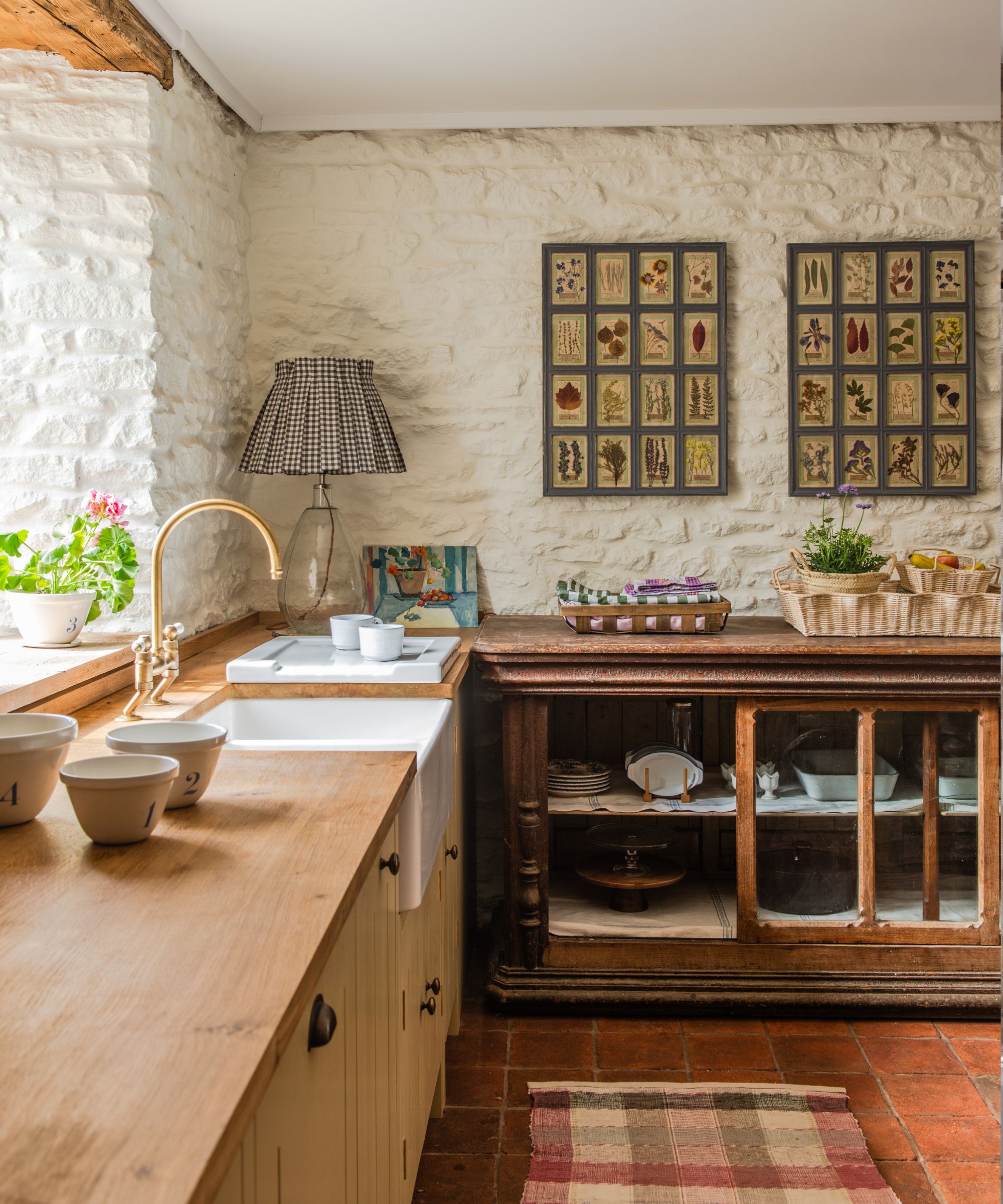
Decorating with vintage is a hallmark of the relaxed country style. Boasting the marks of age and a worn patina, antique and vintage furniture bring a charm inimitable with modern pieces and work wonderfully in kitchens. Of course, this doesn't mean turning rooms into a time warp - combining aged pieces with well-made cabinetry is often key to a stylish yet functional country kitchen.
The kitchen of Lisa Mehydene, founder of interiors store Edit58 captures everything I love about country style and expertly marries vintage with modern. Timeless shaker kitchen cabinets have been paired with carefully selected vintage pieces for a lived-in, welcoming look which has an 'always been there' feel.
'Whilst the cabinetry was new (British Standard by Plain English), we didn’t want the kitchen to feel as though it had just been installed, as it wouldn’t feel right in our old Barn. We therefore added a vintage shop counter from Belgium which we use to store all our serveware; a vintage Indian wall cabinet from our Local farm shop; a long vintage florists table that sits centrally in the space and around that sits a set of original 1930’s Thonet Bentwood chairs sourced via a dealer from an abandoned cinema in the Chez Republic,' explains Lisa Mehydene.
'We also added vintage decorative pieces like artwork and ceramics. Hopefully, the end result is one that feels layered, interesting and cozy. The units feel less built-in, as the standalone vintage pieces offset the ‘newness’ and let the eye travel.'
Soften spaces with plenty of fabric

Most of the successful country homes I've come across have a warm, welcoming atmosphere that makes you feel straight at home. Factoring in plenty of soft furnishings and curtains with soft pleats goes a long way in achieving this look. Linens with slubby textural weaves, gingham, checks, chintzy florals, and stripes are hallmarks of country style.
'There’s something nostalgic and practical about linen, checked fabrics and simple ruffles. They add a feel that harks back to simpler days when function was important and form evolved from what was available. Nothing is too over designed but everything is fit for purpose, all the while creating a relaxed comfortable home,' says fabric designer Tori Murphy.
When it comes to window treatments consider curtains with a cottage pleat. Sink curtains are also making a comeback and are a quick and easy way to obscure unsightly plumbing with pretty prints.
Fill your home with pattern and personal treasures
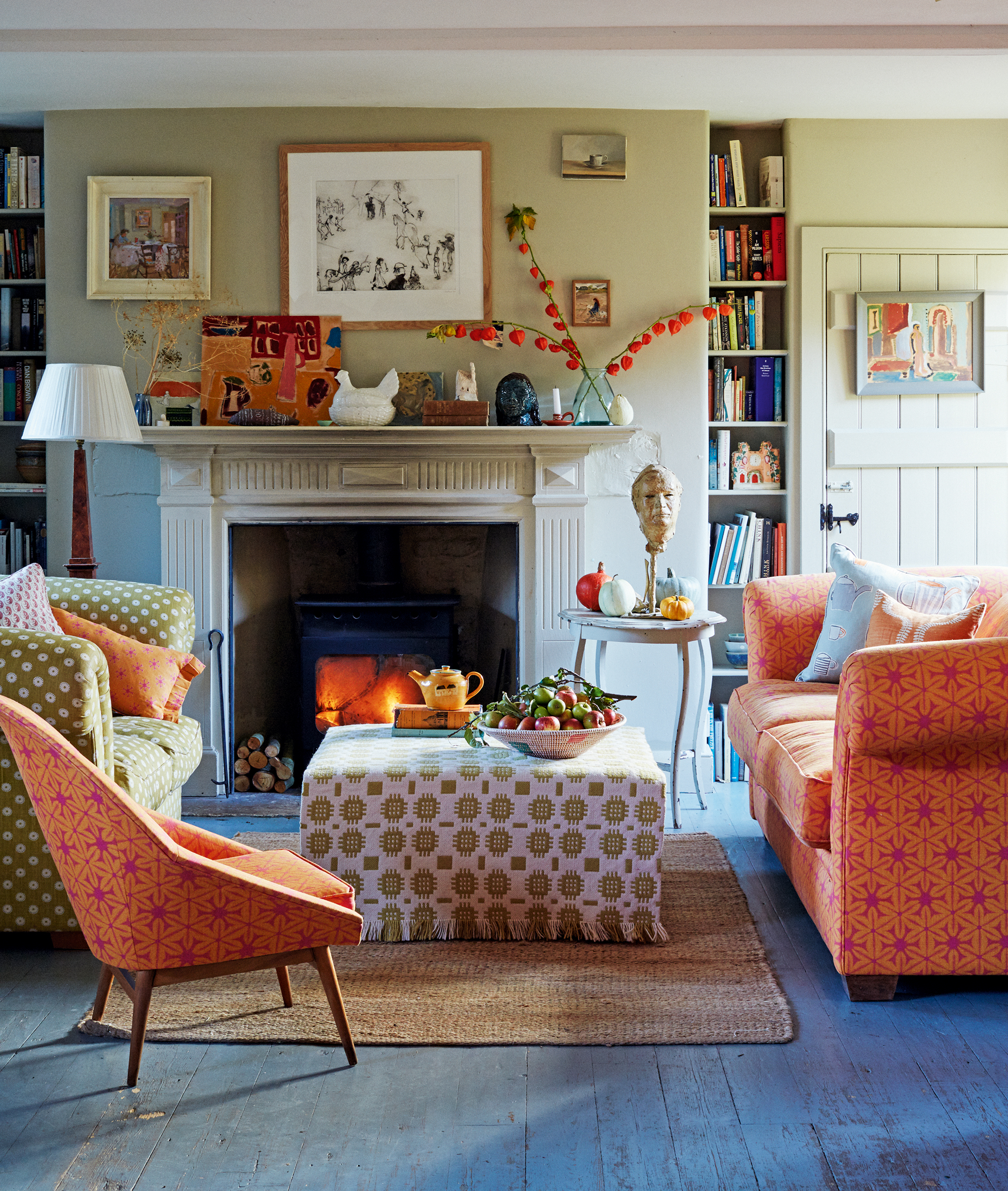
A few years ago I was privileged enough to style a photoshoot in the Cotswold home of Vanessa Arbuthnott. From the moment I walked into her converted barn I was captivated by her relaxed, colourful style. Walls were brimming with paintings, dressers displayed an assortment of handcrafted ceramics and her vibrant ditsy fabrics were layered throughout, resulting in a spirited feast for the eyes.
It made me realize that for a house to be a home it should be filled with the things we love – things that spark joy and happy memories. Don't be too cautious about sticking to a strict style, mix fabrics for a quirky feel and don't be afraid to mix artworks and furniture styles, from antique French pieces to mid-century.
Embrace tongue and groove paneling
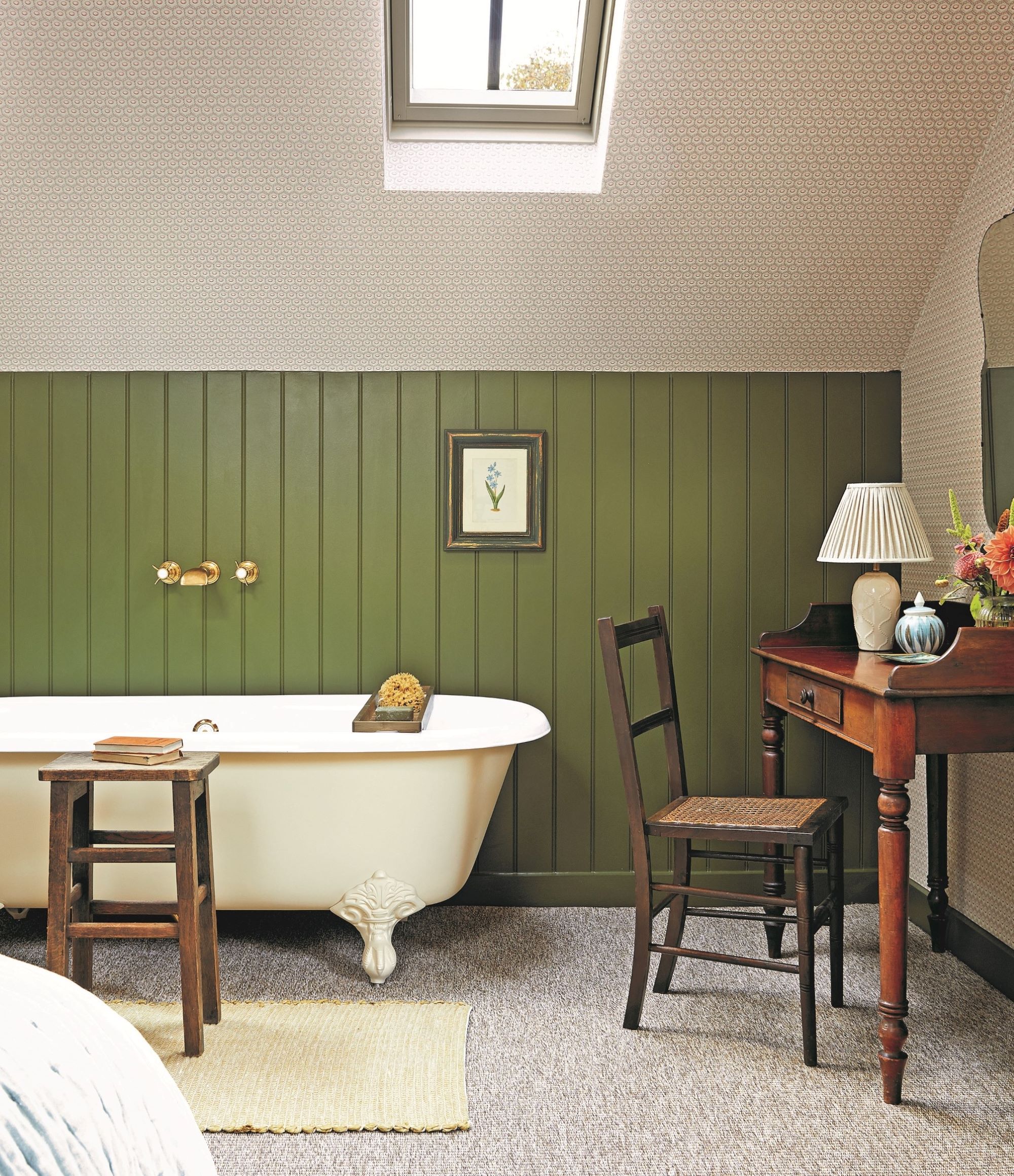
Wood wall paneling is synonymous with country style and something I'm keen to build into my project, as done here by Laura Stephens. Easy to install and practical, it is a great way to evoke a country look even if you don't have a country home.
'We wanted to add character to this bathroom which is a new addition to the cottage. We also needed a sensible backsplash for the bath to protect the wall so for both practical and aesthetic reasons we added groove panelling here. We used MDF boards as they’re cost-effective to install and usually arrive waterproofed and primed which again is a great save on labor.'
Decorate with Arts & Crafts prints
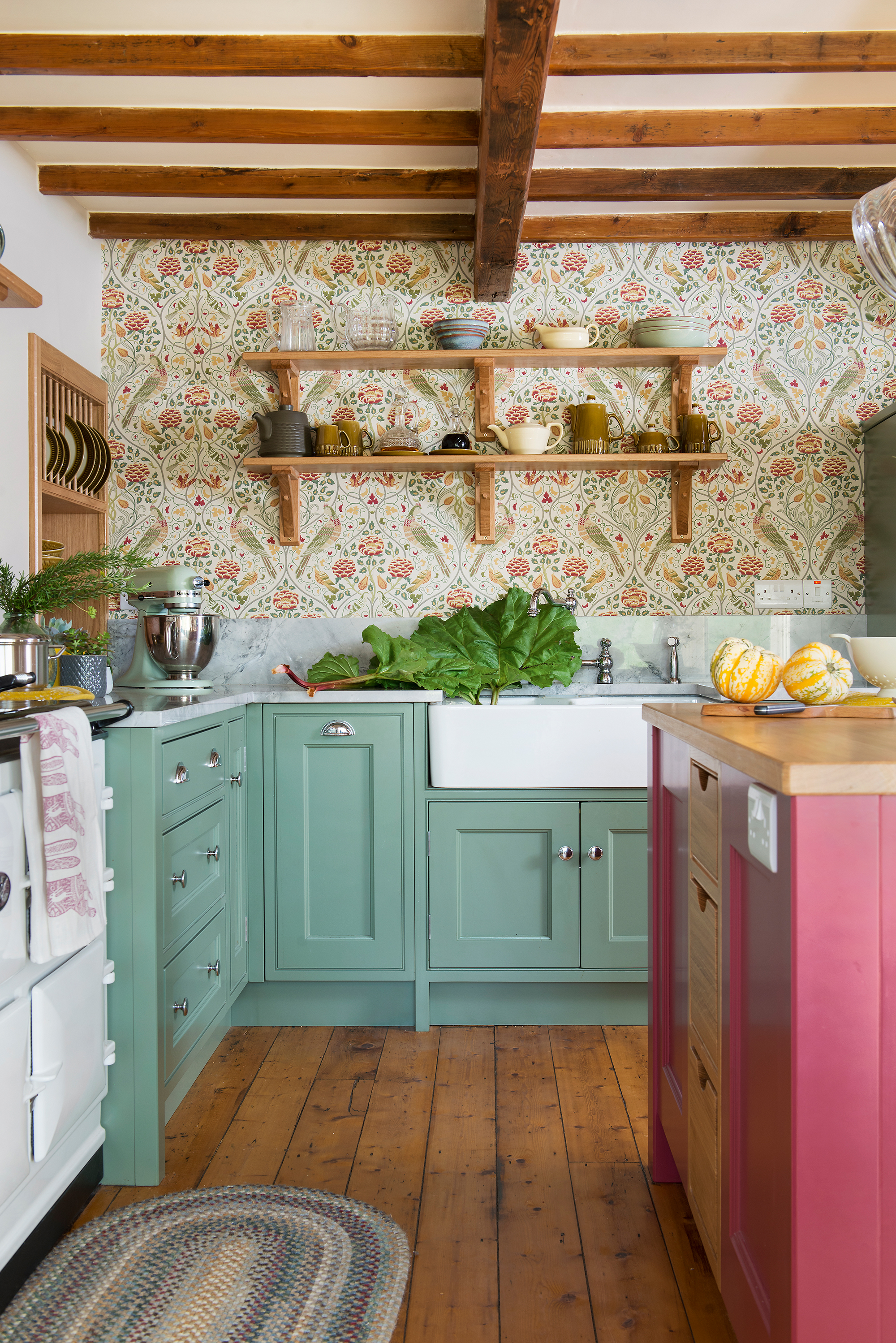
If you're looking to inject some heritage and history as well as beauty of nature into your home then look no further than beautiful Arts & Crafts prints.
The Cotswolds has a strong heritage of craftsmanship and has strong associations with the Arts & Crafts movement which championed principles of honesty, simplicity and craftsmanship in design. Against a backdrop of industrialization and factory production, designers associated with the movement, including the 'godfather of Arts & Crafts' William Morris, looked to the British landscape and traditional craftsmanship. Several designers settled in the Cotswolds, having been drawn to its natural beauty and rich crafting heritage.
This colorful kitchen is a great example of how a kitchen wallpaper can make a starting point for a design, with the hints of green and red drawn out as accent colors for cabinetry.
Decorate with nature-inspired prints
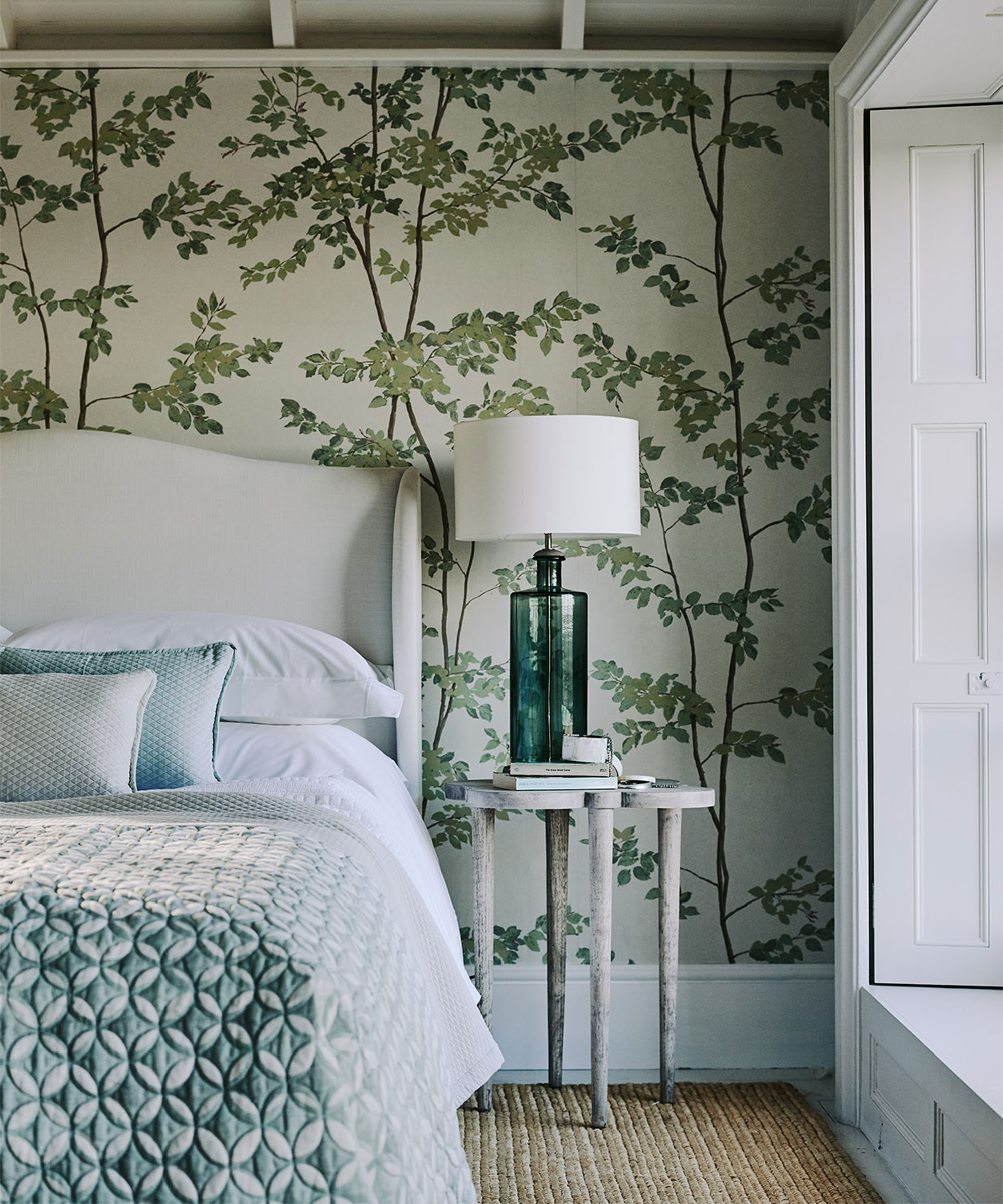
What better way to celebrate the beautiful surroundings of a country home than by decorating with prints covered in beautiful flora and fauna patterns?
If you're looking to embrace Cotswold country style then consider wallpapers by the Gloucestershire-based company Lewis & Wood who produce all their designs in an old mill turned printworks in Woodchester. Here their Beech design infuses this bedroom with the calming powers of nature.
To channel English country style the key is to look to nature for inspiration. Palettes that embrace myriad greens and earthy tones, natural materials of wood and stone and nature-inspired prints, are all characteristic features of the look.
In my opinion, when decorating any country or period home, the most important thing to consider is preserving and showcasing the beautiful original features. Fireplaces, exposed beams, stone walls, flagstones and original windows are all integral to the character of a property and should always be restored where possible. Take them as the starting point for a scheme, choosing colors and materials to complement, and you can't go too wrong.

Pippa is a contributor to Homes & Gardens. A graduate of Art History and formerly Style Editor at Period Living, she is passionate about architecture, creating decorating content, interior styling and writing about craft and historic homes. She enjoys searching out beautiful images and the latest trends to share with the Homes & Gardens audience. A keen gardener, when she’s not writing, you’ll find her growing flowers on her yard for styling projects.